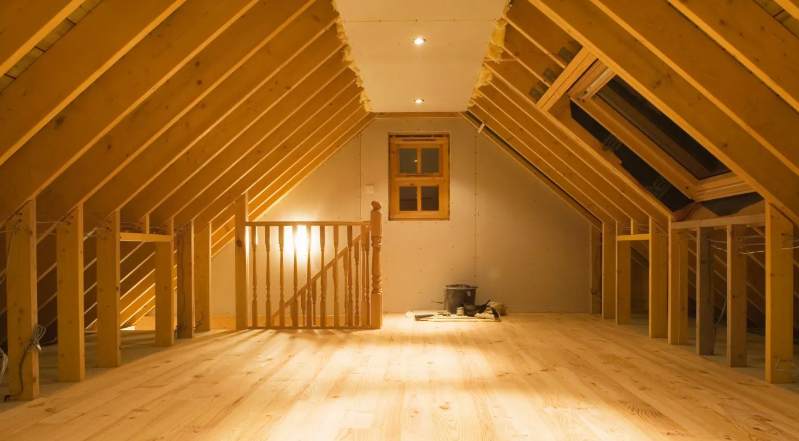Key Takeaways
- Learn how to create a budget plan for attic cleaning costs.
- Discover the factors that influence attic cleaning expenses.
- Get insights on managing attic maintenance effectively.
- Understand the benefits of regular attic cleaning.
Attics are often the most neglected of our homes, leading to hidden costs and potential health hazards. Effectively managing attic cleaning costs can save you substantial money and prevent problems down the line. This article will guide you through the essential tips for budgeting attic cleaning expenses, helping you keep your home in shape without breaking the bank. Regular attic cleaning is not just about cleanliness but also about maintaining the structural integrity of your home.
Why Attic Cleaning Is Important
Regular attic cleaning helps maintain the structural integrity of your home and improves overall air quality. According to the Environmental Protection Agency (EPA), a clean attic can significantly reduce indoor allergens and contaminants. Dust and debris buildup over time might result in poor air circulation and possible health problems. Furthermore, as mold and mildew like unclean and moist conditions, a clean attic helps stop their growth. In addition to extending the life of your insulation, proper attic maintenance lowers the likelihood of pest infestations. Maintaining a clean attic can save expensive repairs and give you and your family a healthier place to live.
Critical Factors Affecting Attic Cleaning Costs
- Size of the Attic: Larger attics will naturally require more time and resources to clean, making them more expensive. The size of your attic is one of the primary determinants of the cleaning cost. Larger spaces mean more surface area to clean, which translates to more labor and materials. If your attic has multiple rooms or a complex layout, this can further increase the time and effort needed.
- Type of Insulation: Certain types of insulation can be more labor-intensive to remove or clean around. For example, an attic with blown-in insulation might be more challenging to clean than one with batts or rolls. Different insulation materials react differently to moisture and pests, affecting how they need to be cleaned.
- Extent of Contamination: Attics infested with pests, mold, or severe dirt buildup will cost more to clean thoroughly. If your attic has been home to rodents or insects or has scant mold growth, it will require specialized cleaning methods and materials. Mold remediation, in particular, can be quite costly due to the health risks and the need for proper containment and removal techniques.
Steps to Create a Budget for Attic Cleaning
- Evaluate the Current Condition: Conduct a thorough inspection to assess what needs to be cleaned or repaired. An initial assessment can help you identify specific problem areas and the extent of work required. Look for signs of pest infestations, water damage, and excessive dust or debris. Document these issues to provide accurate information when obtaining quotes from cleaning services.
- Estimate the Costs: Get quotes from professional cleaning services and compare. When requesting quotes, ask for detailed breakdowns of what each service includes. This will help you compare different providers and understand what you’re looking for. Do not hesitate to ask about any additional costs during the cleaning process.
- Allocate Funds: Set aside a specific amount in your home maintenance budget for regular attic cleaning. Consider setting up a dedicated savings account for home maintenance to ensure you have available funds when needed. Regular savings will make it easier to manage unexpected costs without disrupting your financial stability.
- Plan for Seasonal Cleaning: Set out time to clean your attic at least twice a year to maintain its condition. Regular cleaning helps keep dust, dirt, and potential allergies from building up. Since other home maintenance is completed in the spring and fall, these are the ideal seasons to clean an attic.
Tips to Reduce Attic Cleaning Costs
- Regular Maintenance: Check and clean your attic regularly to prevent a severe buildup of dirt and contaminants. Frequent inspections can help you catch minor issues before they become significant problems. Set up a maintenance schedule and stick to it, ensuring your attic remains in good condition year-round.
- Invest in Pest Control: Keep pests at bay with proper pest control measures, reducing potential damage and cleaning costs. Install screens on vents and seal any gaps or cracks where pests could enter. Consider hiring a professional pest control service to perform regular inspections and treatments.
- Use Efficient Storage Solutions: Organize your attic with proper storage solutions to make cleaning more accessible and less time-consuming. Labeled bins and shelves keep items off the floor and reduce clutter. This makes cleaning easier and helps protect your belongings from damage and contamination.
Long-Term Benefits of a Clean Attic
Keeping the attic tidy offers several long-term advantages. It guarantees a healthier living environment, increases energy efficiency, and extends the lifespan of your house. You can prolong the life of your attic and avoid structural damage by clearing out dust and mold,. Furthermore, a well-kept attic can raise the value of your house overall, so it’s ultimately a wise investment. A neat and orderly attic will appeal to potential buyers since it shows that the house has been well-maintained.

